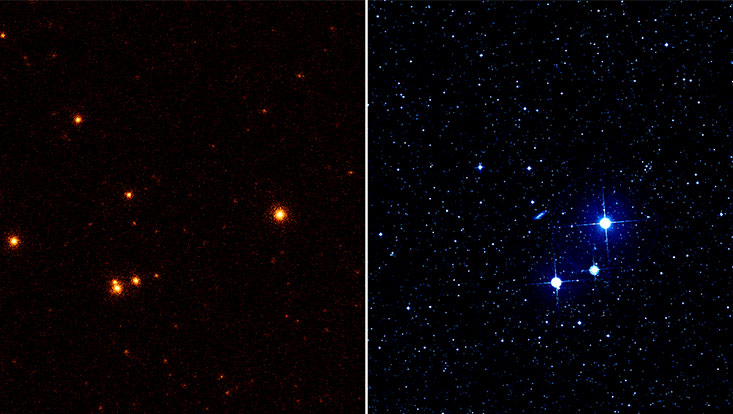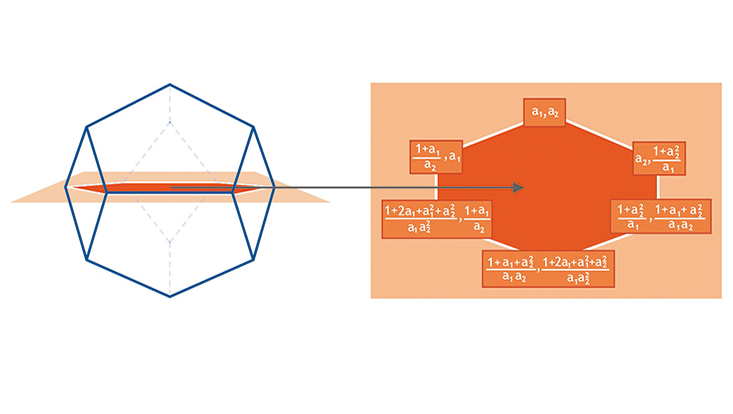First results of the space X-ray telescope eROSITA publishedNew insights into the life of young stars and massive black holes
28. Juni 2021

Foto: eROSITA collaboration/Robrade
Two years ago, the eROSITA X-ray telescope was sent into space as part of a Russian-German collaboration to produce the most comprehensive map of the sky in X-ray light. The German eROSITA consortium, which includes Universität Hamburg, has now published the first data taken with the satellite-based X-ray telescope.
The publication of the first eROSITA data is accompanied by 35 scientific papers that will appear in a special issue of the journal “Astronomy and Astrophysics” and are already publicly available. Six of these publications have been led by researchers from Universität Hamburg and focus on the activity of stars and the effects of black holes on their environment.
“Using these data, we were able to show that massive black holes heat up the gas in large groups of galaxies,” says doctoral student Thomas Pasini from Hamburg Observatory, who led one of the publications. This insight was only made possible by the new images from eROSITA.
“It's great to see this telescope working so perfectly. The early data already enable groundbreaking results and offer a preview of the final sky map, which will be completed in just over two years,” says Prof. Dr. Marcus Brüggen from Universität Hamburg. By combining different sky maps in the radio and X-ray range, it was found that black holes emit jets that are stronger in denser environments. This groundbreaking result implies that black holes are “fed” from the hot surrounding gas. Moreover, it was found that stronger jets do not lead to larger jets because it is difficult for them to expand farther in denser environments.
In another work, researchers from Hamburg Observatory observed a young star cluster in the constellation Chameleon. Young stars have a high magnetic activity, which heats the plasma on their surfaces to several million degrees Celsius. This hot plasma emits strong X-ray radiation. X-ray observations are therefore particularly well suited to identifying and studying these stars.
“The X-ray images of the entire sky will contain more than three million sources, much more than all currently known X-ray sources,” adds Prof. Dr. Jürgen Schmitt from Hamburg Observatory, who has been involved with the project from the very beginning.
eROSITA is one of two X-ray telescopes on-board the Spectrum X-ray Gamma Space Observatory (SXG). The telescope allows measurements in the X-ray range and makes astrophysical events visible that produce radiation at energies larger than ultraviolet light. Hamburg Observatory is significantly involved in this space mission and carries out the mission planning for the eROSITA telescope. This activity is funded by the Federal Ministry of Education and Research. In addition, the Hamburg scientists are comparing the X-ray sources with data from optical telescopes, for example the Hamburg TIGRE telescope in Mexico, and from radio telescopes, such as the Low Frequency Array (LOFAR). The scientific exploitation of the data is part of the research activities of the Hamburg Cluster of Excellence "Quantum Universe".
As for many other researchers, COVID-19 has complicated the work of the eROSITA team. “Only six months after the start of eROSITA's scientific observations, the global pandemic forced us to massively change our approach,” says lead scientist Dr. Andrea Merloni from the Max Planck Institute for Extraterrestrial Physics. Even the operation of the telescope 1.5 million kilometres away had to be maintained from home. “I'd like to think that the unique opportunity to work with a brand new 'discovery machine' helped many of us to maintain focus - at least it did for me,” Merloni says. “eROSITA has given us many reasons to celebrate, and we are all looking forward to having a real party soon!”
eROSITA
The eROSITA X-ray telescope was sent into space in 2019 as part of the SXG Space Observatory and is part of a joint Russian-German science mission supported by the Russian State Corporation for Space Activities (Roskosmos), the Russian Academy of Sciences represented by the Russian Space Research Institute (IKI) and the German Aerospace Center (DLR). The telescope was developed and built by the Max Planck Institute for Extraterrestrial Physics (MPE) with the participation of the Dr. Karl Remeis-Observatory in Bamberg, the Universität Hamburg, the Leibniz Institute for Astrophysics Potsdam (AIP) and the Institute for Astronomy and Astrophysics at the University of Tübingen, with support from DLR and the Max Planck Society. The Argelander Institute for Astronomy at the University of Bonn and the Ludwig-Maximilians-Universität Munich were also involved in the scientific preparation of eROSITA.


